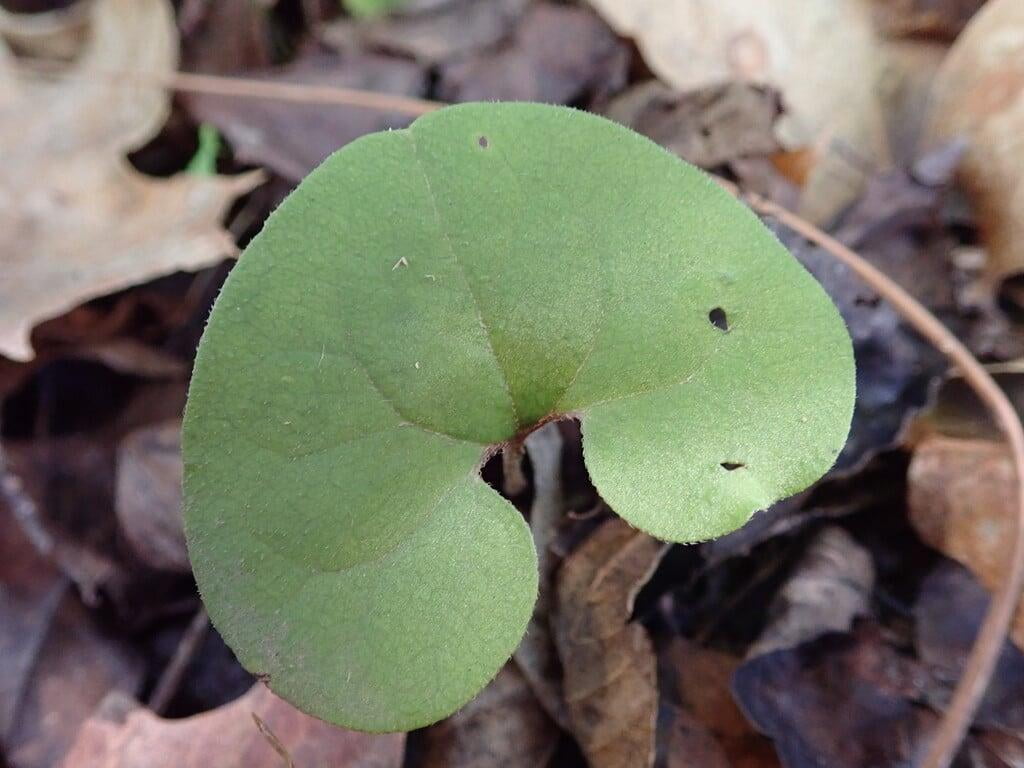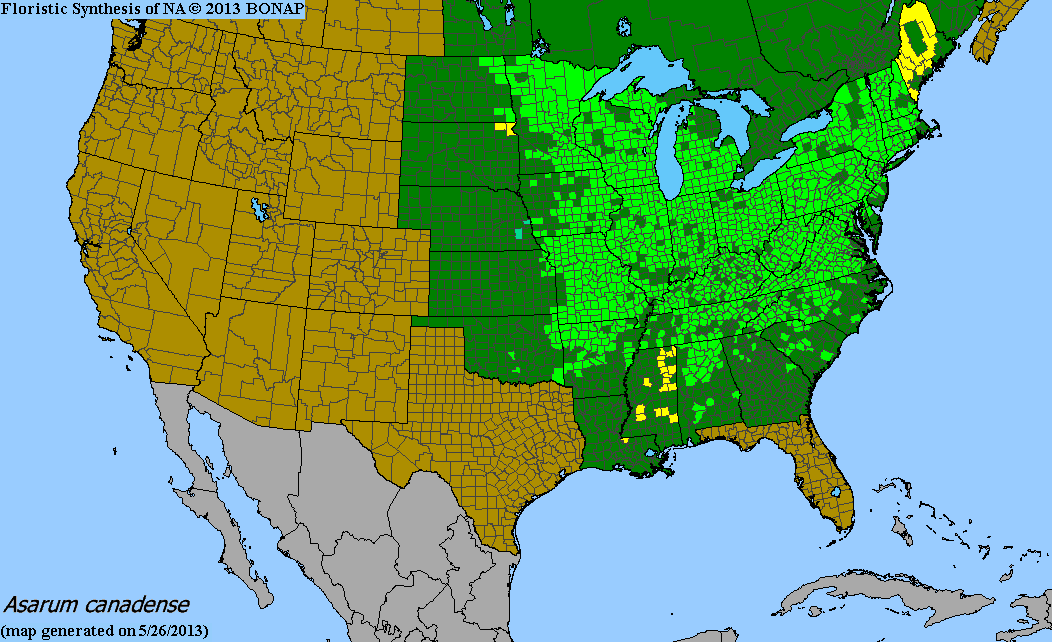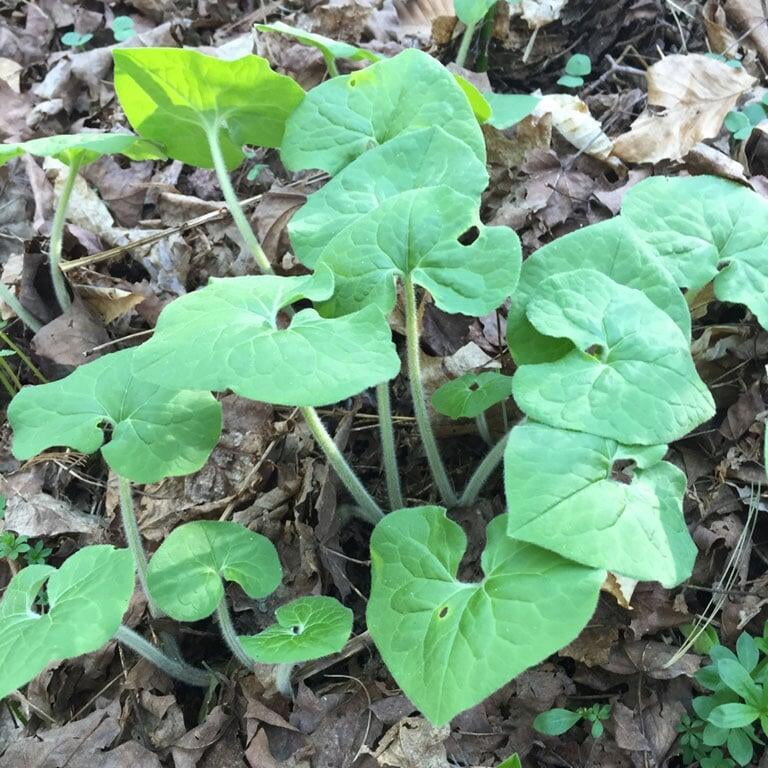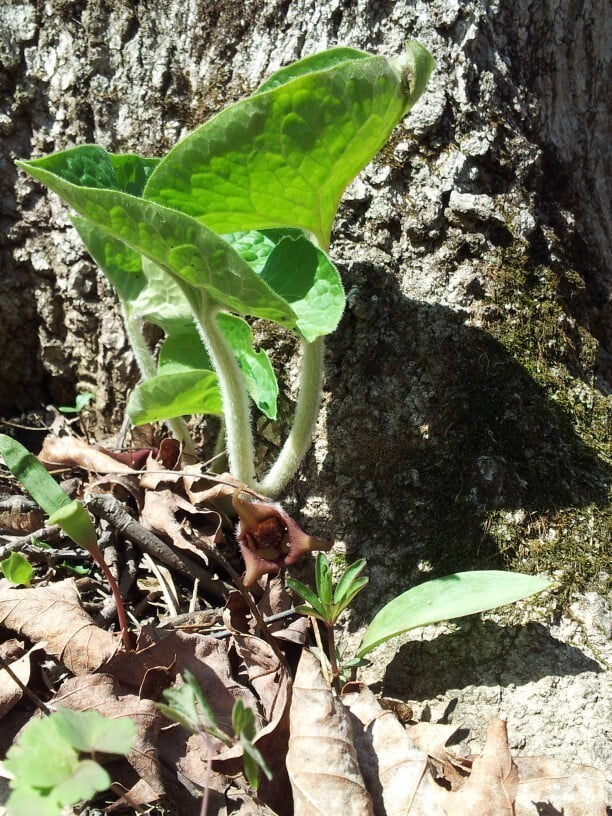Asarum canadense
Wild ginger Description:
Asarum canadense, commonly known as wild ginger, is a low-growing herbaceous plant that is native to the moist woodlands and forests of eastern North America. It is a shade-loving plant that typically grows to a height of 10-20 cm (4-8 inches) and spreads through underground rhizomes to form a dense groundcover.
The plant has distinctive heart-shaped leaves that are dark green, glossy, and grow up to 15 cm (6 inches) wide. The leaves emerge from the base of the plant on long petioles that can be up to 20 cm (8 inches) long. The stems of the plant are also hairy and often purplish in color.
Asarum canadense blooms in early spring, producing bell-shaped flowers that are dark red or brownish-purple in color. The flowers are situated close to the ground and are often hidden beneath the leaves. They are pollinated by flies, which are attracted to their strong odor.
The plant has a long history of medicinal use by indigenous people and early settlers in North America. Its rhizomes, leaves, and flowers are all used for various ailments, including stomach problems, coughs, and sore throats. However, it is important to note that Asarum canadense contains aristolochic acid, which can be toxic in large doses and should only be used under the guidance of a qualified healthcare provider.
Native Range:
Wild ginger can be found in most of the Midwest and Eastern United States.
Standard Plant Information:
Plant Height: 4" - 12"
Bloom Time: April - May
Preferred Habitat: Does well in part shade to full shade in rich woodlands.
Sowing:
For most homeowners, the best option is to scatter seed on the ground by hand broadcasting at a minimum of 16-64 pls ounces per acre. For even coverage, we recommend that you broadcast seed in perpendicular rows across the site to ensure even coverage.
You’ll want to broadcast any grass seed first, which will get raked into the soil lightly. Next, it is ideal to mulch the area lightly with either a clean (no seed) straw or preferably with our native Little Bluestem straw, sold at our retail garden centers. After a light mulching is complete, now it’s time to broadcast your native wildflower seeds, which should not be raked into the soil. A good rain or watering is sufficient to cover the seed.
Planting:
Simply dig a hole in the soil slightly larger than the plant’s roots. Ensure that the soil line of the plant is maintained during the transfer (i.e. the plant should be at the same level with the ground as it was in the pot). Pack any loose dirt back around the plant and make sure you water it well the same day to ensure it has the best chance of survival.








